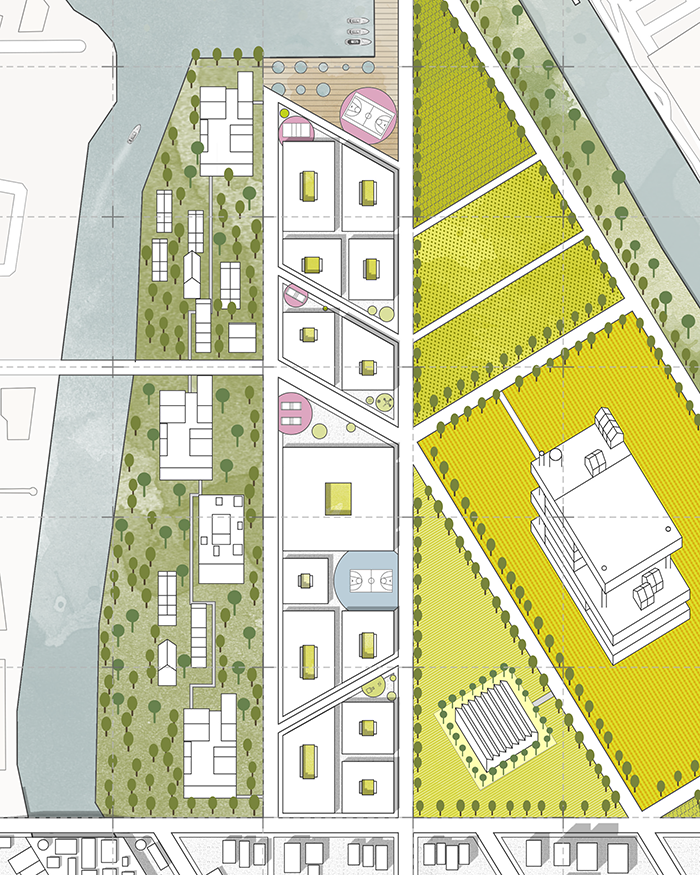The city of Chicago, a typical American city where low-income citizens are vulnerable to obesity, diabetes, and other health issues due to unaffordable healthy food. Many have ascribed the phenomenon to the lack of available healthy products in low-income communities, which is so-called “Food Desert”, areas filled with fast food but far away from supermarkets or grocery stores. However, both USDA (United States Department of Agriculture) and the Institute of Medicine of the National Academies agree that the “Food Desert” problem cannot be solved by merely improving the accessibility to healthy food, it is also related to the awareness of food. How could architects change the situation by (re)designing our cities with food in mind?
The master dissertation aims to transform Goose Island, a former industrial land in Chicago, into a productive and efficient urban living hub, to integrate agriculture into the community and aware city dwellers about food. The paper will talk about the “Food Desert” issue first and then generally show the relationships between cities and food through history to demonstrate how does the “Food Desert” problem comes into being. Followed by alternatives that may relieve the “Food Desert” issue in cities.
The second part is research and analysis. It will give the basic information of Goose Island and then talk about how to reconnect the isolated island with the city by applying the Disurbanism theory put forward by Soviet architects in the 1920s. And taking Goose Island as a city laboratory to explore a new urban living method that has the ability to reduce the “Food Desert” impact to low-income citizens in Chicago.
The last part is about the design intervention for Goose Island. There are three strips follow the Chicago grid system and go through the island, Commercial Strip, Educational Strip and Civic Strip. The rest part of the island will keep the original grid on the island and work as farmland for profit-making. The overlapping of two grid systems also represents how urban life can be integrated with rural life. After the overall design guideline for the whole island, the paper will focus on the Civic Strip, which contains residential housings as well as other public programmes like community library, fitness and workshops. The new housing system is based on the housing unit in the proposal for the city of Magnitogorsk put forward by Ivan Leonidov and his architects group OSA in 1930. The community-sense housing type might provide a new possibility for low-income communities with a large number of single moms. People can plant their food, support each other and develop a sense of belonging.

